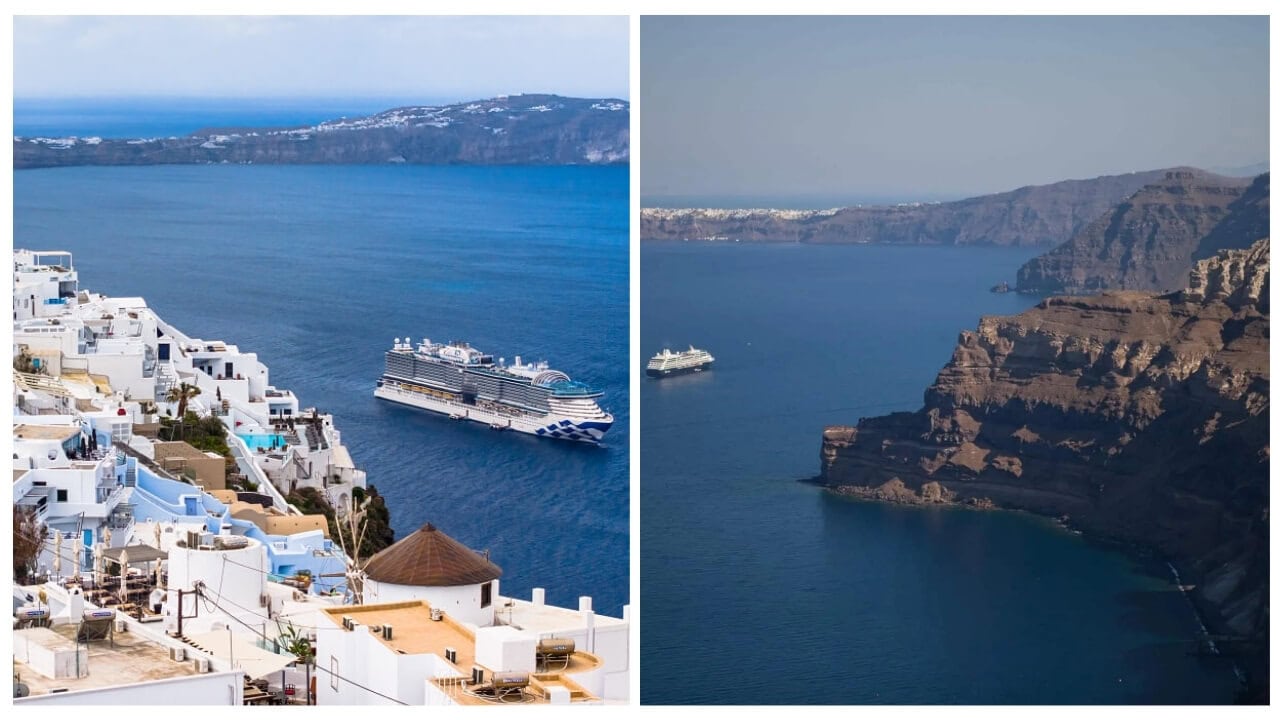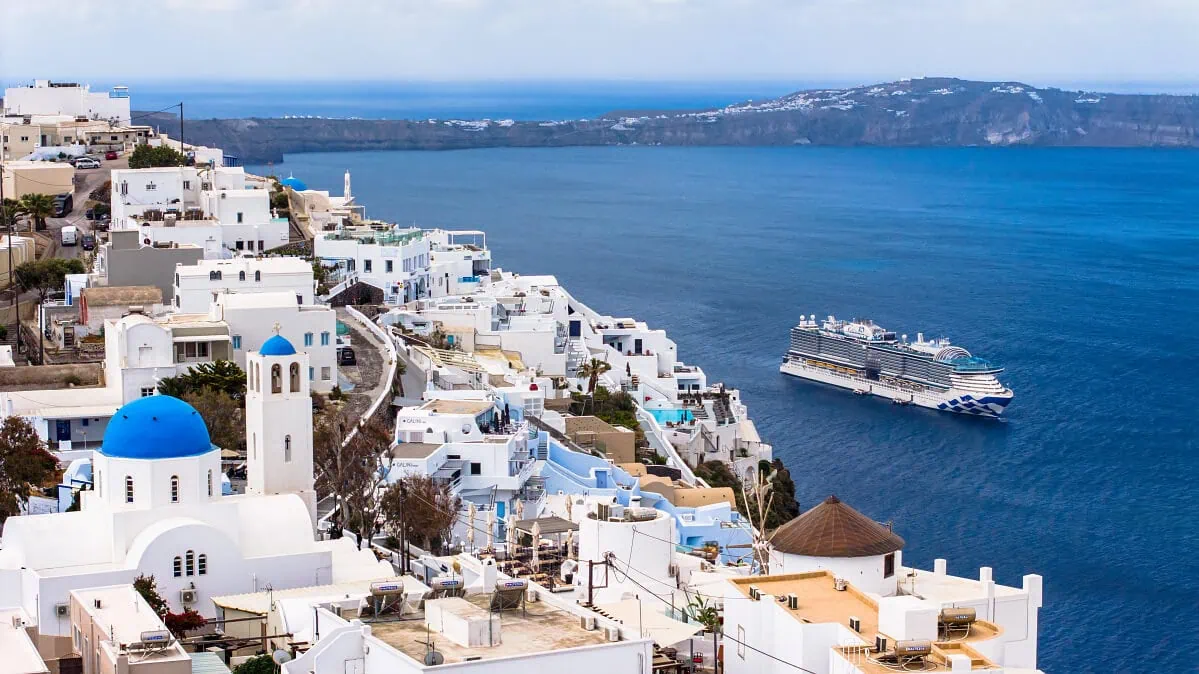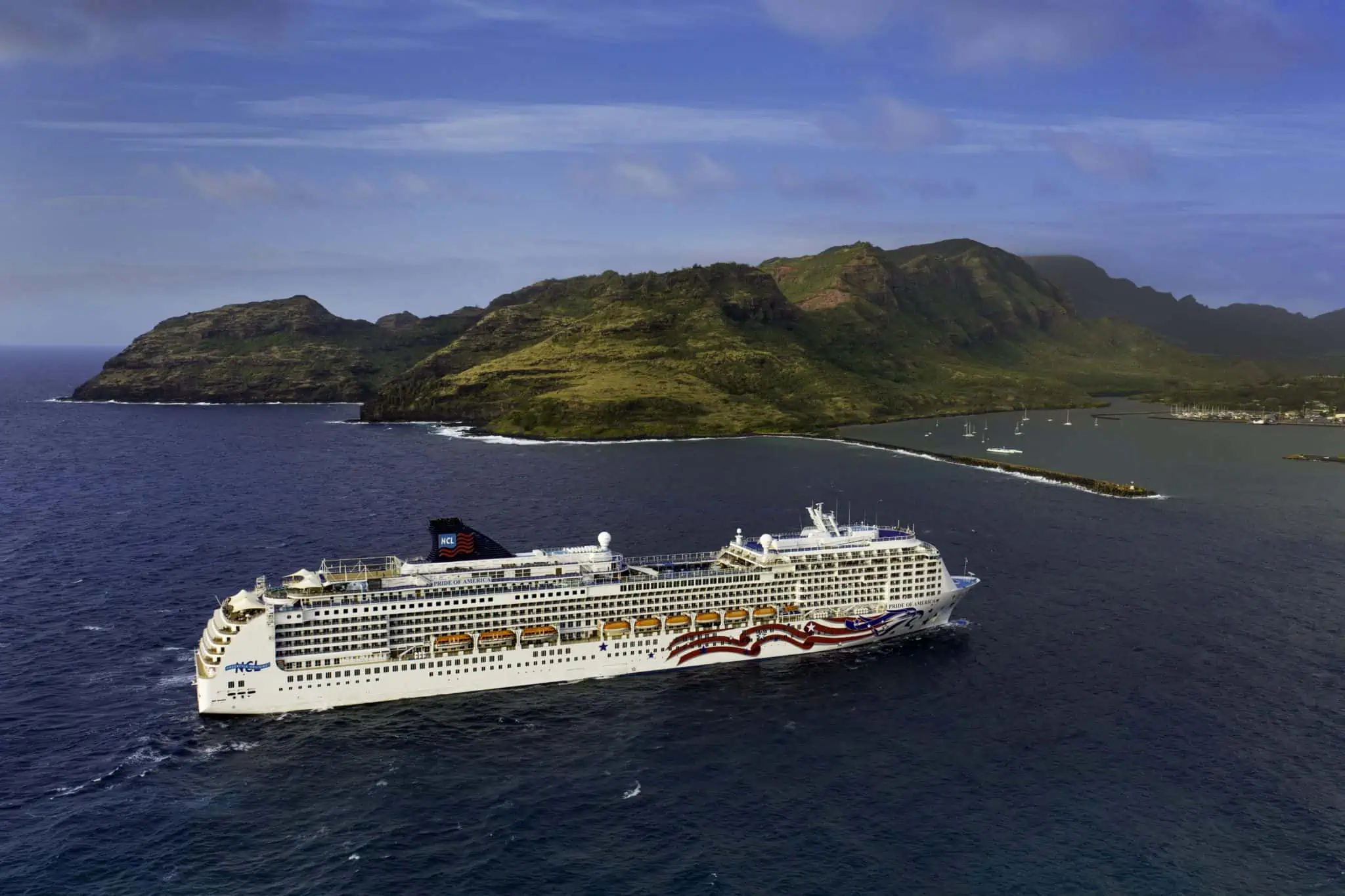Greece just approved new taxes for cruise ship passengers.
Beginning in 2025, guests will be charged €20 ($21) to visit the country’s two most visited islands, Santorini and Mykonos. Meanwhile, a lower €5 (around $5.27) fee will apply to other destinations, including Crete, Corfu, and Rhodes.

Tourists spending a night in the southeast European nation will also be paying more next year. Short-term accommodations during the peak tourist season, from April to October, will experience a daily tax increase from €1.5 ($1.58) to €8 ($8.41). During winter, the daily tax will be raised from €0.5 ($0.53) to €2 ($2.11).
Guests who prefer hotels will need bigger budgets. The daily tax for hotel accommodations will be raised to a maximum of €15 ($16) and will vary based on establishments’ star ratings.
The parliament hopes to raise €400 million (or $421 million) annually, nearly twice the amount collected in 2023.
Officials said the Climate Change Resilience Tax will help Greece navigate the economic effects of natural disasters.
Pushback Against Overtourism

The bill, suggested as early as August, addresses overtourism.
Mykonos and Santorini have become major hubs for cruise ship passengers. Santorini alone saw over 11,000 visitors in a single day last August.
The month before, approximately 17,000 tourists arrived within just 24 hours. These staggering numbers are overwhelming for an island with a local population of only about 15,000 residents.
The number of cruise ships visiting Santorini and Mykonos in 2023 has also grown significantly. Santorini welcomed 800 cruise vessels, bringing nearly 1.3 million passengers, while Mykonos hosted 749 ships with nearly 1.2 million tourists.
These figures highlight the islands’ growing popularity, which is straining their limited infrastructure and local communities.
Greek Prime Minister Kyriakos Mitsotakis said that the government is considering a cap on cruise ships which could be introduced in 2025.

The new tariffs come shortly after Mexico announced a $42 immigration tax set to take effect in 2025.
Industry groups have expressed concerns that it could make Mexican ports among the most expensive in the region, potentially deterring tourists.






